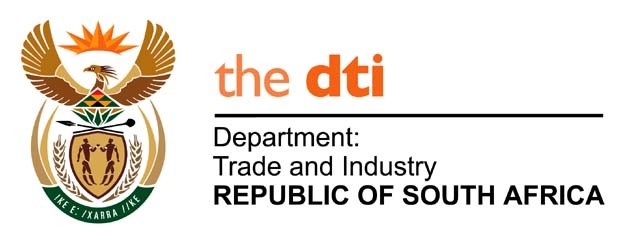

The long-awaited amendments to the Financial, Agricultural and Construction Sector Codes were announced by Department of Trade and Industry Minister, Rob Davies, recently – but what changes do these codes mean for companies in 2018?
Jaco Posthumus, head of operations for LFP Training described the amendments in brief per sector and how relevant skills development really is at a time such as this.
Operating in the finance sector? Here’s what to expect
Transformation within this sector is always at the forefront and while there has been speculation in the past as to whether the implemented codes truly promote transformation, the amended codes look to do exactly this.
Posthumus explained that the initial process to develop a Charter emanated from the 2002 NEDLAC Summit where stakeholders committed to a sector charter. “The Amended Charter for this industry has unique features and deviations which address transformation peculiarities which have existed in the past.”
The aim of the amended codes is for empowerment financing to ensure that black-owned entities are adequately supported. Here, black agriculture funding is necessary to assist with the land reform process, and transformational infrastructure financing (which was previously neglected in townships and rural areas) comes to the fore. “It’s important to note that this is a key upliftment and transformation mouthpiece for South Africa with a required spend of no less than R122 Billion by the sector under Empowerment Financing to investment.”
While Posthumus believes that the industry is well prepared for the changes, the implementation of priority elements and weightings are once again harder to reach. “Here, skills development and upskilling of disabled and unemployed individuals is a key initiative to achieve maximum points whilst promoting education,” he said.
Access to financial services will be affected, these include: inclusive banking, access to affordable and understandable long term insurance risk cover, and access to affordable and understandable short term insurance risk cover. Posthumus continued, saying: “The measurement of this element will be based on whether there is penetration of products, development of appropriate products, densification of service points, electronic access, and geographic access amongst the LSM 1-5 beneficiaries.”
Operating in the construction sector? Here’s what to expect in a nutshell
With the last codes for this sector gazette in 2009, the amended codes implemented in 2017 looks to introduce priority elements to the construction codes. “While companies may find these are now harder to reach based on the new codes, we feel that these should be embraced. Companies will be required to meet at least the sub-minimum on the three priority elements,” said Posthumus.
He elaborated, saying that in the past, the industry has come under the spotlight and these codes look to once again promote fairness, best practice and compliance. “The recent amended codes are rigid and require companies to meet the priority elements – this is probably the most critical amendment. In failing to do so, companies will be forced to make some changes within their organisations – from both a skills development and a ownership/ management point of view.”
“The second most critical amendment to your business is, of course, that the codes are much stricter to reach the desired level and here, a company cannot for example be a level 3 without having the correct ownership structures in place,” Posthumus continued.
The code furthermore promotes small business enterprises and the growth thereof, with companies being required to do business with QSE’s and EME’s to once again promote small business growth and ensure that B-BBEE creates equal opportunities for all.
Changes to the B-BBEE scorecard rating for the construction sector indicate that companies, which in the past would have possibly reached a level 3 without necessarily having ownership, would now reach a level 5. They would also be discounted a level for not meeting the priority element and the same would apply to Skills Development, Preferential Procurement and Supplier Development.
In closing on this sector, Posthumus concluded: “There is also a requirement for companies to meet EAP targets to ensure maximum points. Failing to do so will mean that companies are overstaffed and underscored. The scorecard elements have changed from seven to five elements.”
“We really do see this sector as a critical one to help bridge unemployment and ensure equal opportunities. We believe that amended codes coupled with skills development can do just that.”
Operating in the agricultural sector? Here’s what to expect
“Agriculture is the bedrock of our economy and a very important contributor to its development. This is evident by the latest 2017 third quarter Statistics on Gross Domestic Product which shows that agriculture production has risen by 44.2% and was the main driver of the 2% GDP growth of the third quarter,” Posthumus explained.
Concerns have been expressed in the past calling for more flexibility relating to AgriBEE Sector Codes. Today, the amended codes look to strengthen a drive towards job creation and equal opportunities for black suppliers, black commercial farmers and black industrialists.
“Enhanced recognition is given to initiatives which result in Greenfield ventures, job creation and beneficiation of primary products. In addition, they support land reform projects, localisation of goods and services which are not produced in South Africa currently,” said Posthumus.
“The sector code makes provision for current owners of land to transfer at least 30% of productive agricultural land under the ownership element. This is, however, not static and will be reviewed on an ongoing basis.”
“One of the key highlights of the Amended AgriBEE Sector code is an increase of the target for supplier development to 3% of Net Profit After Tax (NPAT) (which is higher than 2% of NPAT of the Generic Codes). The aim is to create a pipeline of black suppliers and black industrialists within the value chain of the South African agricultural industry,” Posthumus concluded.
More news
- PART 2: CONCRETE IN THE DESIGN OF A UNIQUE LUXURY HOME IN GEORGE, SOUTH AFRICA
- PART 1: CONCRETE IN THE DESIGN OF A UNIQUE LUXURY HOME IN GEORGE, SOUTH AFRICA
- MVULE GARDENS, AFRICA’S LARGEST 3D-PRINTED AFFORDABLE HOUSING PROJECT
- PART 3: HARNESSING THE POTENTIAL OF HIGH SULPHUR FLY ASH IN CONCRETE PRODUCTION
- PART 2: HARNESSING THE POTENTIAL OF HIGH SULPHUR FLY ASH IN CONCRETE PRODUCTION


